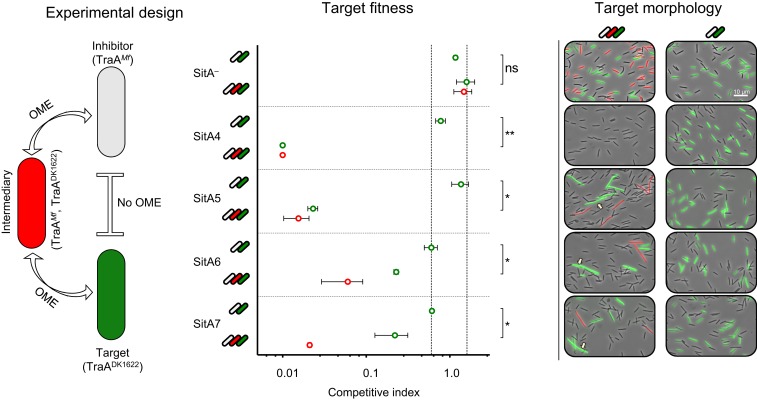Fig. 3.
New SitA families are serially transferred. Experimental design: cell types are labeled where the SitAI+ inhibitor cell expresses an incompatible traA allele with the target cell and therefore cannot engage in OME. The intermediary cell expresses both traA alleles and thus can engage in OME with both strains to serve as a conduit for serial transfer. Intermediary cell is also susceptible to the inhibitor cell toxin. Target fitness: competitive index of target (green data points) and intermediary cells (red data points) in the 2-strain and 3-strain cocultures when the inhibitor cells express one of the SitA toxin families or is an isogenic SitA− control. Competitive index is a measure of the target-to-inhibitor cell ratio at 24 h normalized to the ratio at 0 h as enumerated by fluorescent microscopy. Starting ratios are 1:1 and 1:1:1 with the exception of SitA6 inhibitors, which were mixed at 3:1 and 3:1:1 ratios. Area between vertical dashed lines indicates experiments in which target cells were not killed and were not filamentous as observed by the target morphology panel. Error bars indicate SE, and significance indicators show results from a 2-tailed nonparametric t test. ns, not significant (*P < 0.05, **P < 0.01). Target morphology: concurrent micrographs of the quantified experiments show that, in the 3-strain coculture, green fluorescent target cells are either eliminated or show filamentation and morphological defects (arrows). In the 2-strain cocultures, green cells appear normal. (Scale bar, 10 µm.)

